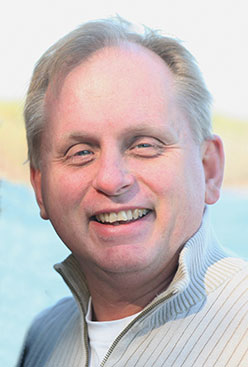For the past two years, workplaces have had to quickly adapt to the global pandemic, forcing them to utilize facilities management principles of agile working, activity-based working, or a combination of the two.

These principles were discussed by Tony Mayfield, the keynote speaker for the recent “Facilities Management Now: An Online Educational Experience Virtual Summit.” Mayfield is Senior Consultant and Managing Partner of On-Target Innovations LLC, a Tennessee-based technology and engineering consulting firm.
Agile
In his opening keynote, Mayfield said that it’s important for companies to be agile in their operations. “It’s patently obvious that just about all organizations need to be more agile than ever before. The ability to stop, adjust, adapt, and change is essential in today’s fast-changing environment. If we cannot respond and adapt to change, we simply cannot survive, we can’t innovate, but most importantly, we just can’t compete.”
Specially, this relates to facilities management as he encourages departments, such as engineering and marketing, to partner on cross-functional work. Agility has been part of the Project Management Body of Knowledge for many years. Using agile-work environments, employers decide which elements yield the most productive work. The emphasis on agile-work environments is a focus on the team, not the individual. It is also in providing flexible types of work environments such as state-of-the-art video conferencing rooms, coffee shops for informal meetings, boardrooms for formal meetings, and small private rooms for better concentration for smaller teams.

Traditional approaches have requirements up-front, require formal change requests, and encourage information to be siloed in specific departments. Agility, however, not only encourages flexibility in all stages but also open communication between departments. Agility aims to create the ability to quickly adapt based on feedback, which allows facilities management professionals to “simply do their job,” Mayfield said, without first needing to get authorization. According to Mayfield, there are few organizations that operate with true agility and instead have layers of bureaucracy.
Activity-Based Working (ABW)
In activity-based working, the individual is allowed to lead versus management-driven work. The emphasis is on accomplishing daily activities. “For this to work well, managers must give workers freedom and trust,” Mayfield said, adding that employers using this model are more focused on the output and not on the process.
“Employees today want more flexibility, autonomy, and the ability to choose when and where they work,” he said. This style allows workers to choose from an assortment of settings and be more productive. Mayfield suggested facility managers need to provide those settings, whether in-person or remotely, on-demand from anywhere. An emphasis on activity-based working environments, including equipment requests, is on the individual.
Combined Approach
Using components of both models, workplaces can become both useful and effective places where needs of the individual and team are met. Mayfield said that COVID has led to more workplaces creating a combination model, which he claimed is the most flexible and allows for spaces to be designed for a greater variety of purposes.
Employers have used both approaches to suddenly, due to COVID, provide for social distancing at in-person conferences in a booked venue with a virtual option or completely move an in-person conference to a virtual setting. Both of those situations involve the combining of efforts of the facilities team and IT team. “It’s an unnatural grouping—you don’t normally see IT and Facilities work together,” he said.
Success
For true success with any of the models, Mayfield recommends employers hire self-motivated and hard-working individuals and design spaces that meet the needs of the company and the individual. “By applying design and thinking, you can work out what type of activity-based area that employees require then strategize on creating solutions,” he said.
To keep up with the latest Facilities Management Advisor events and upcoming webinars, please visit our events page here.
